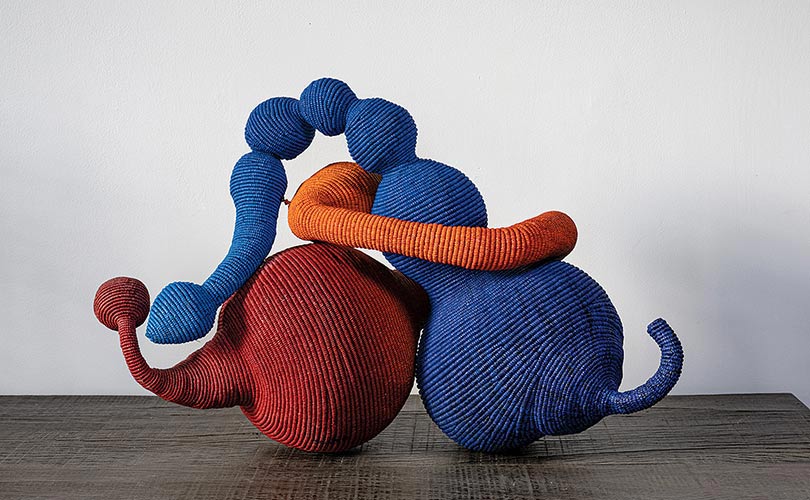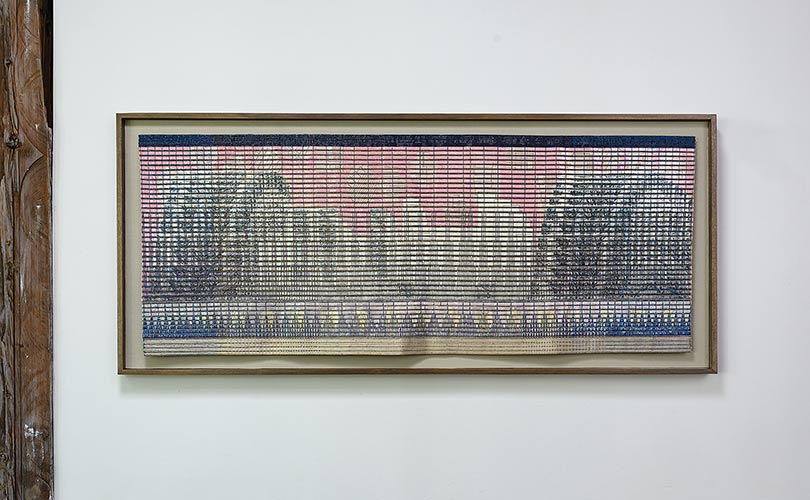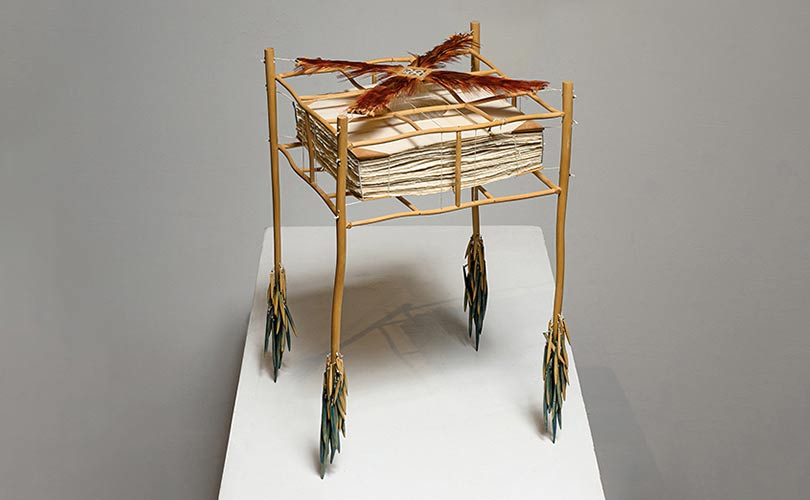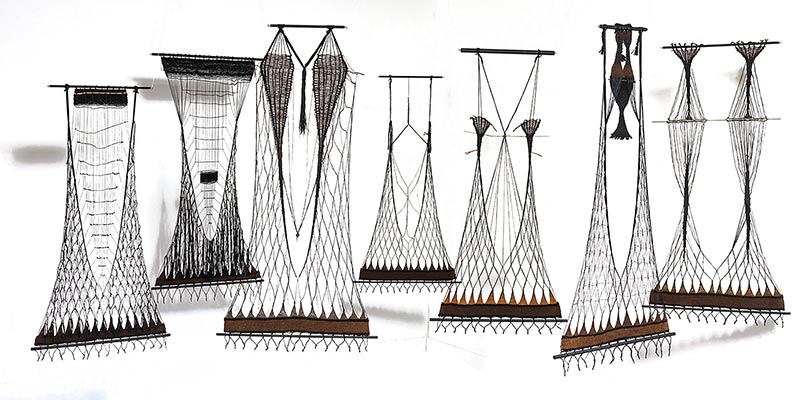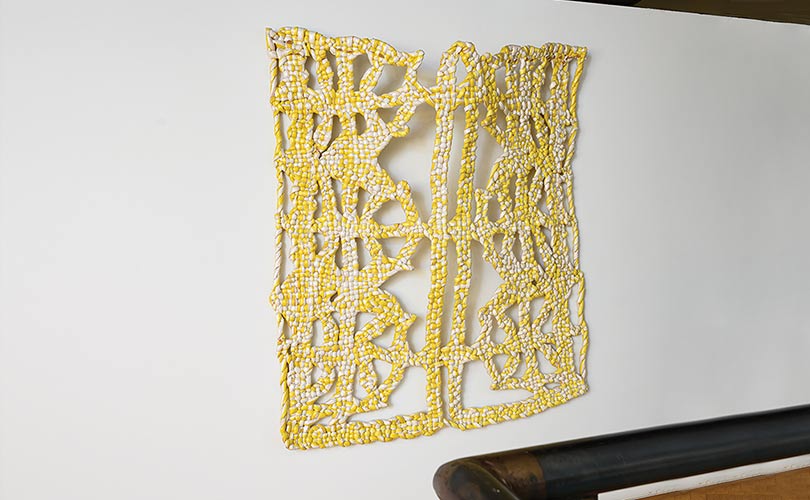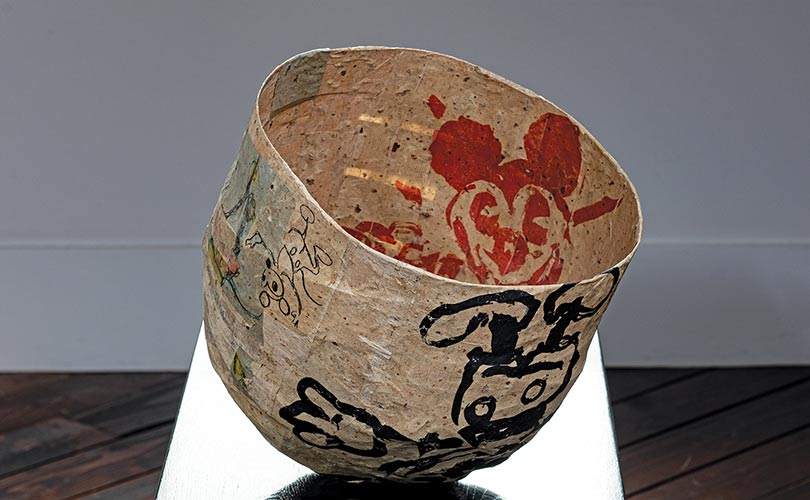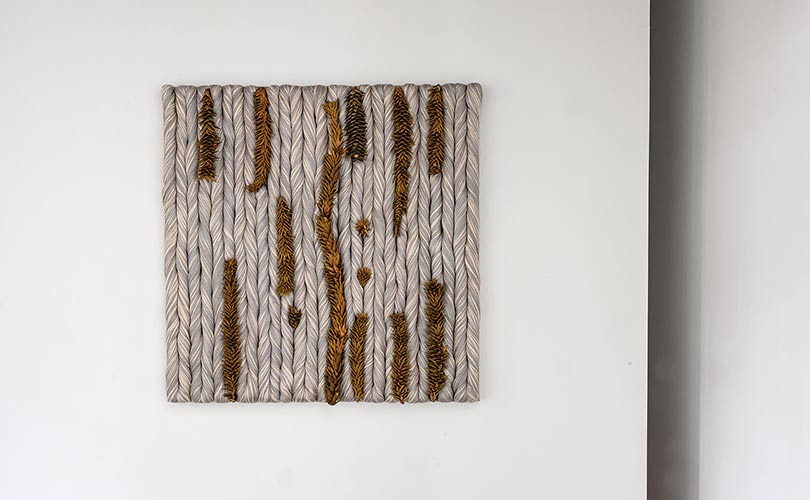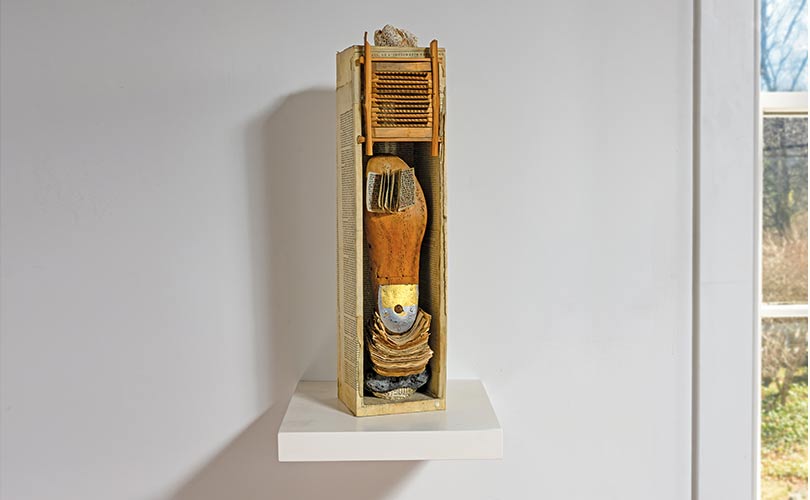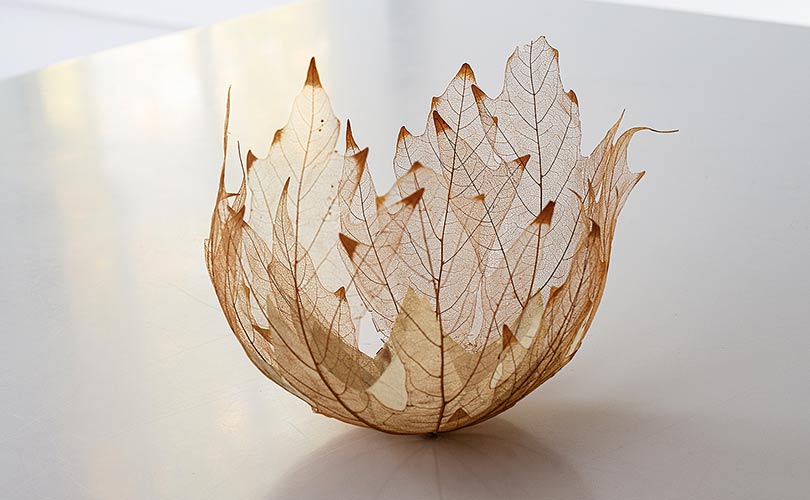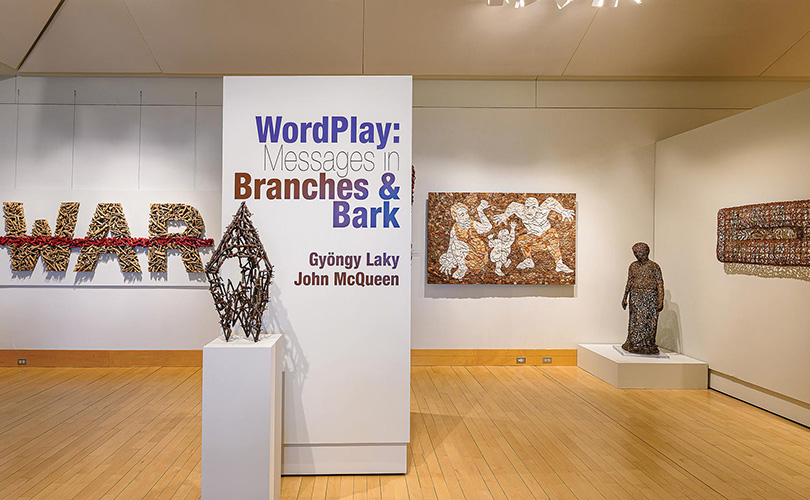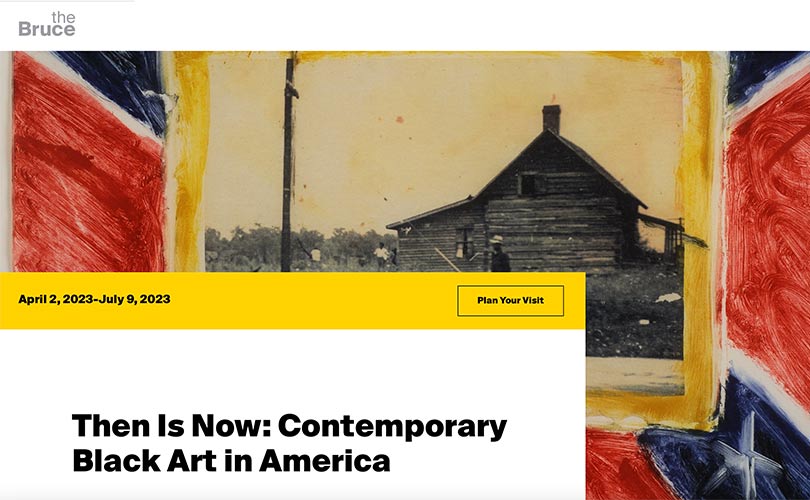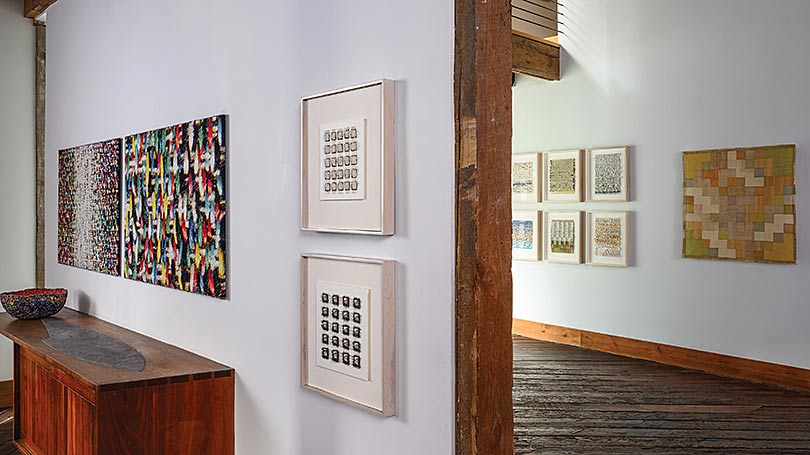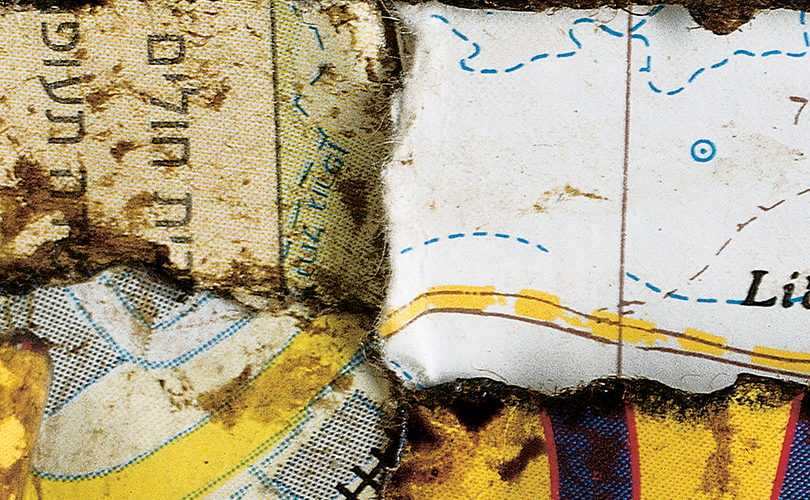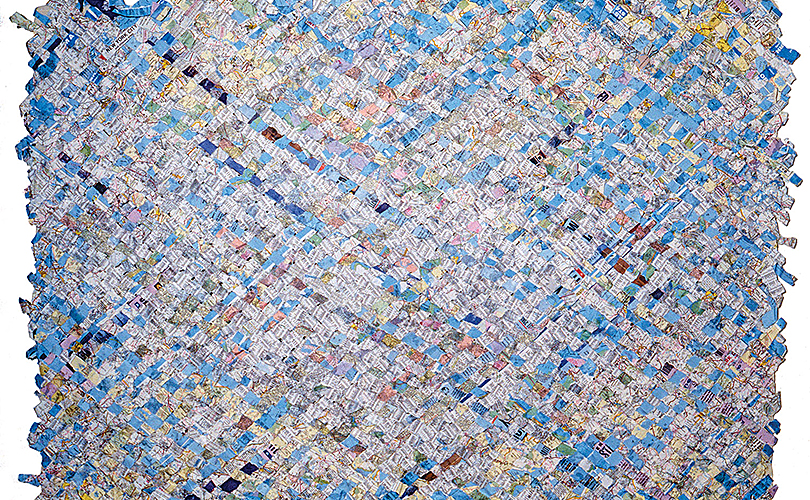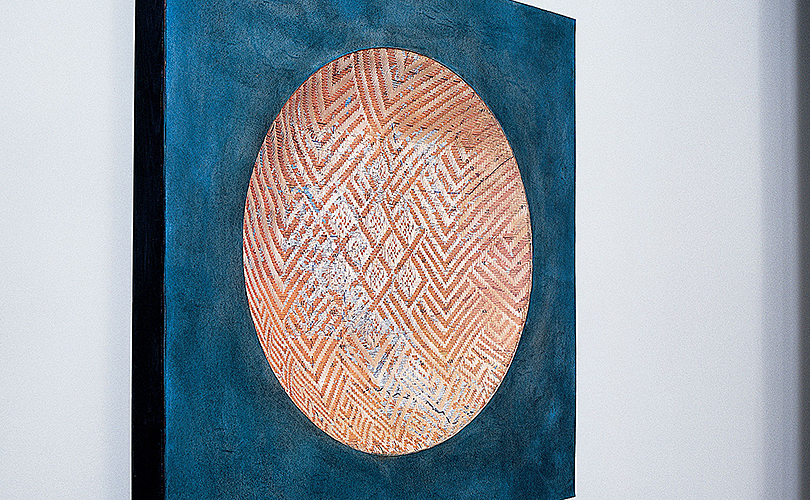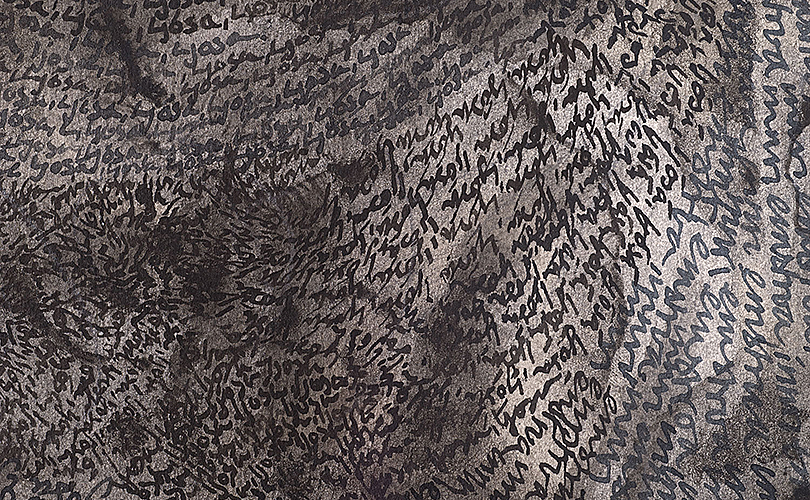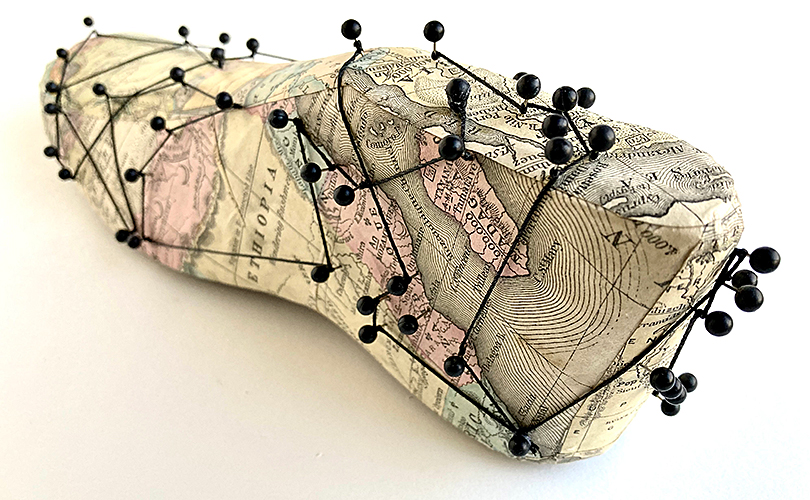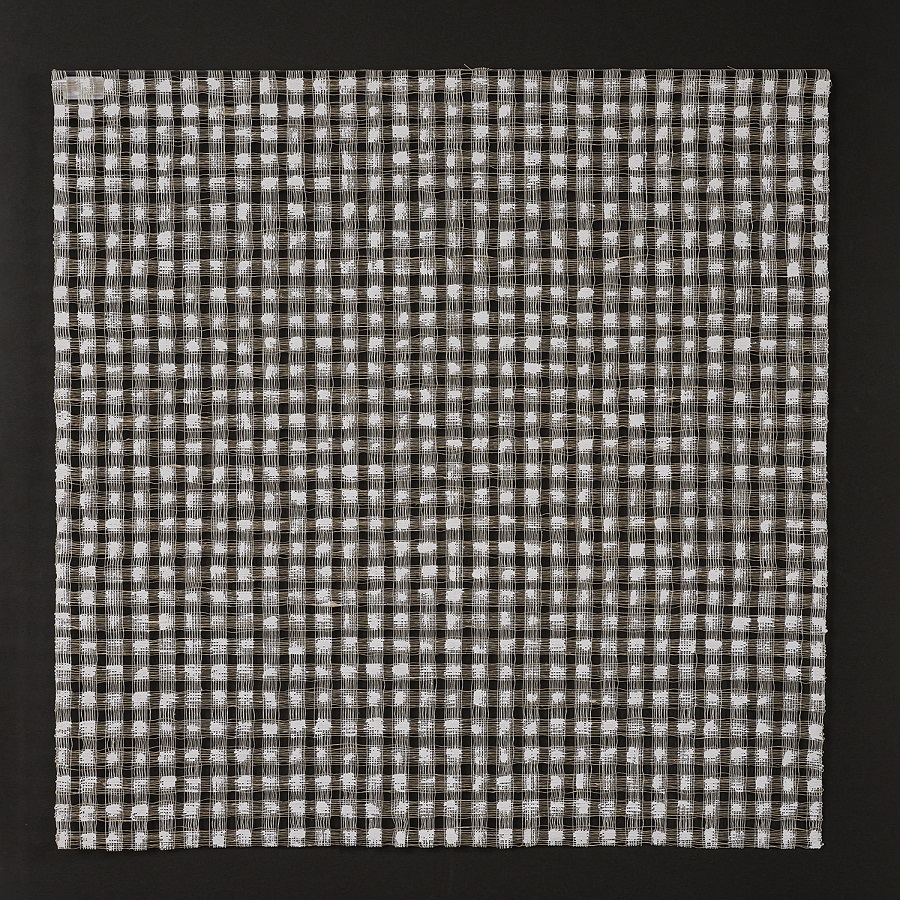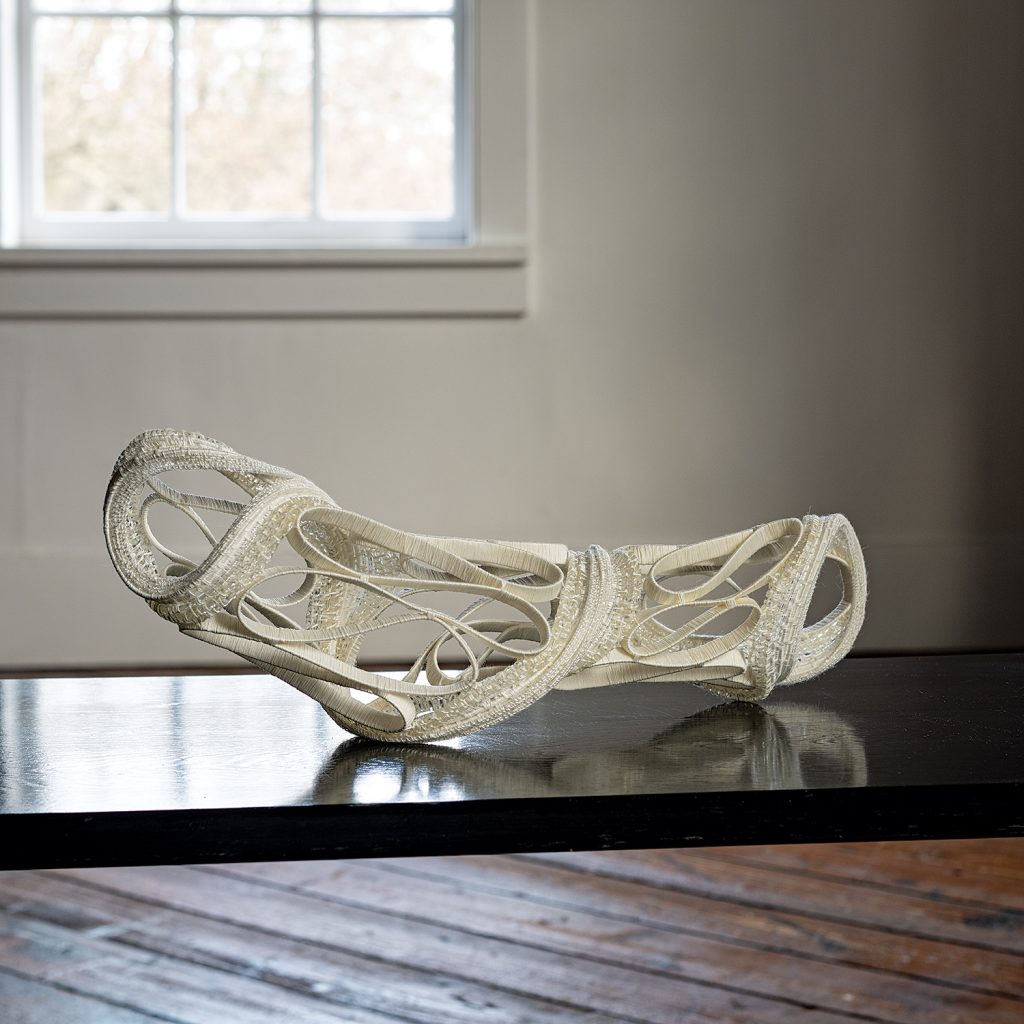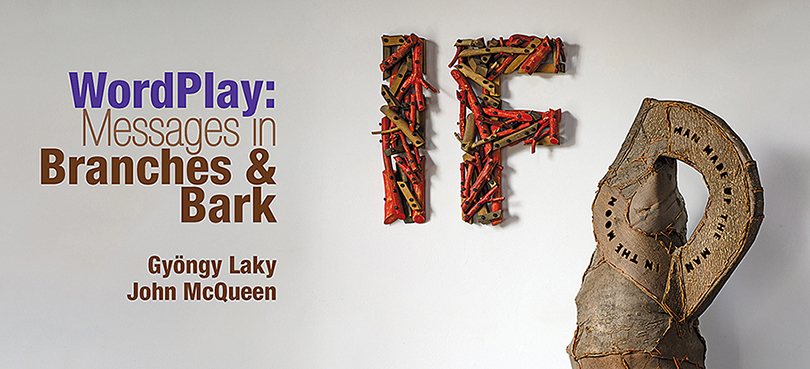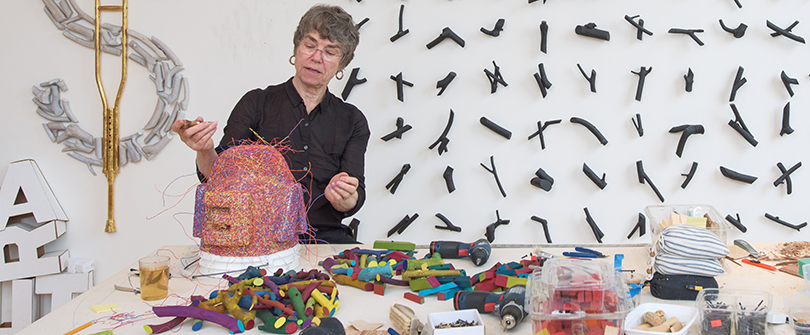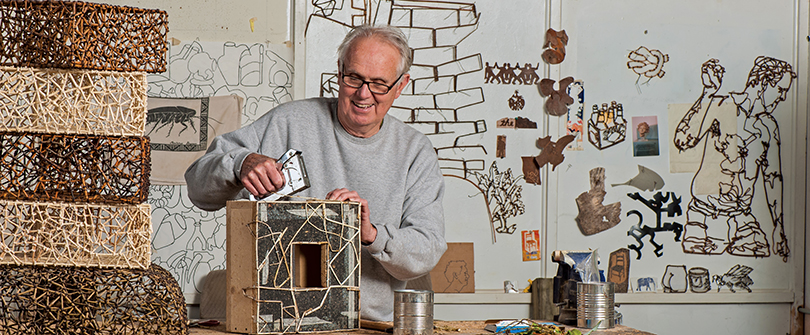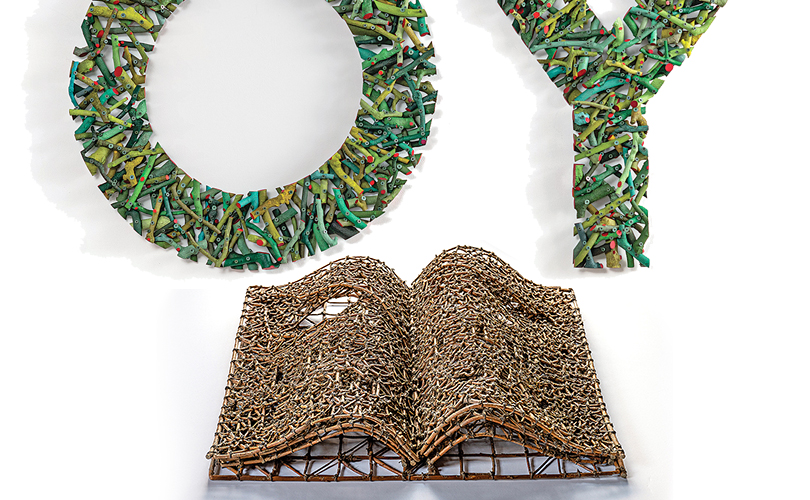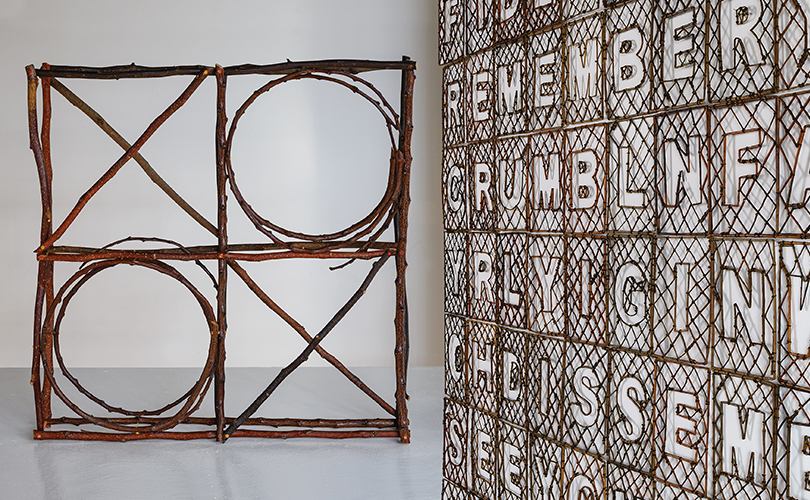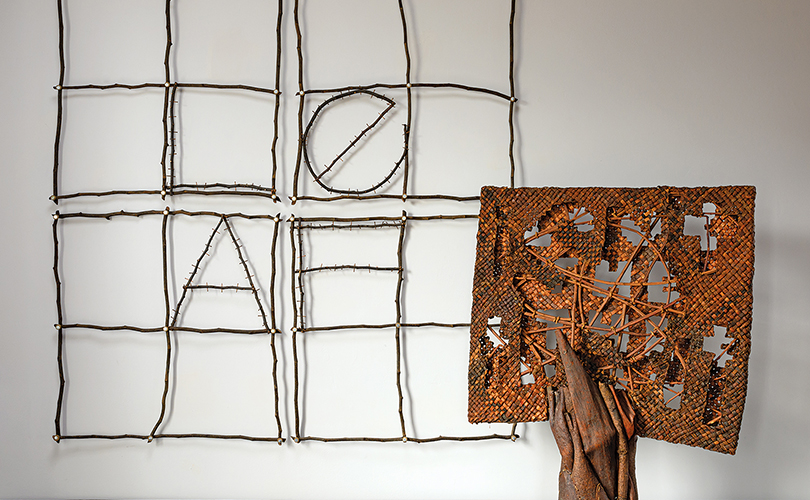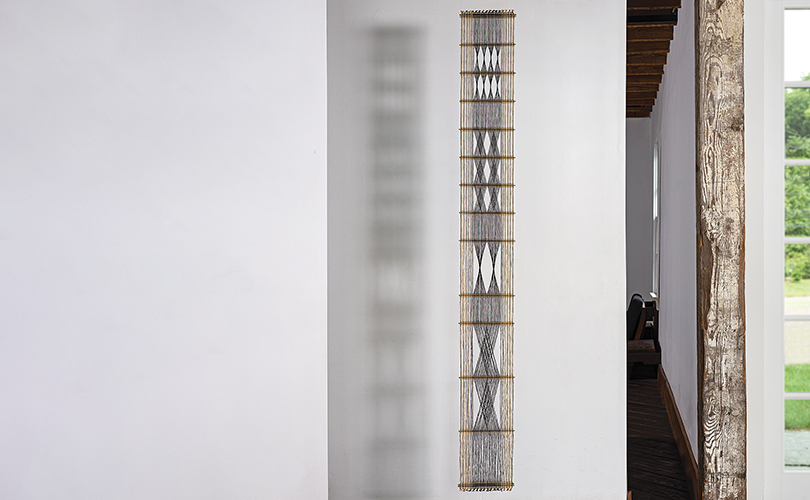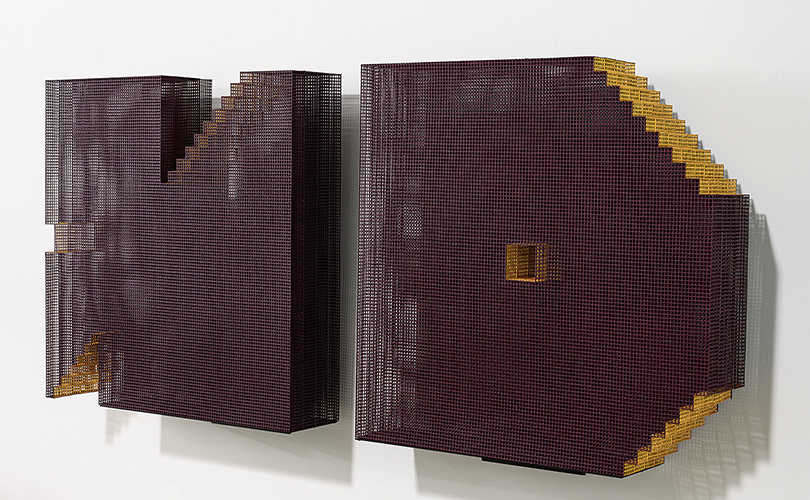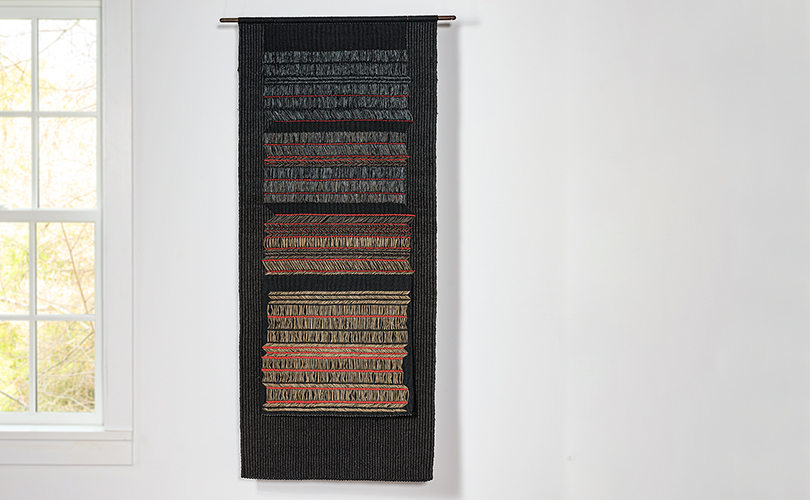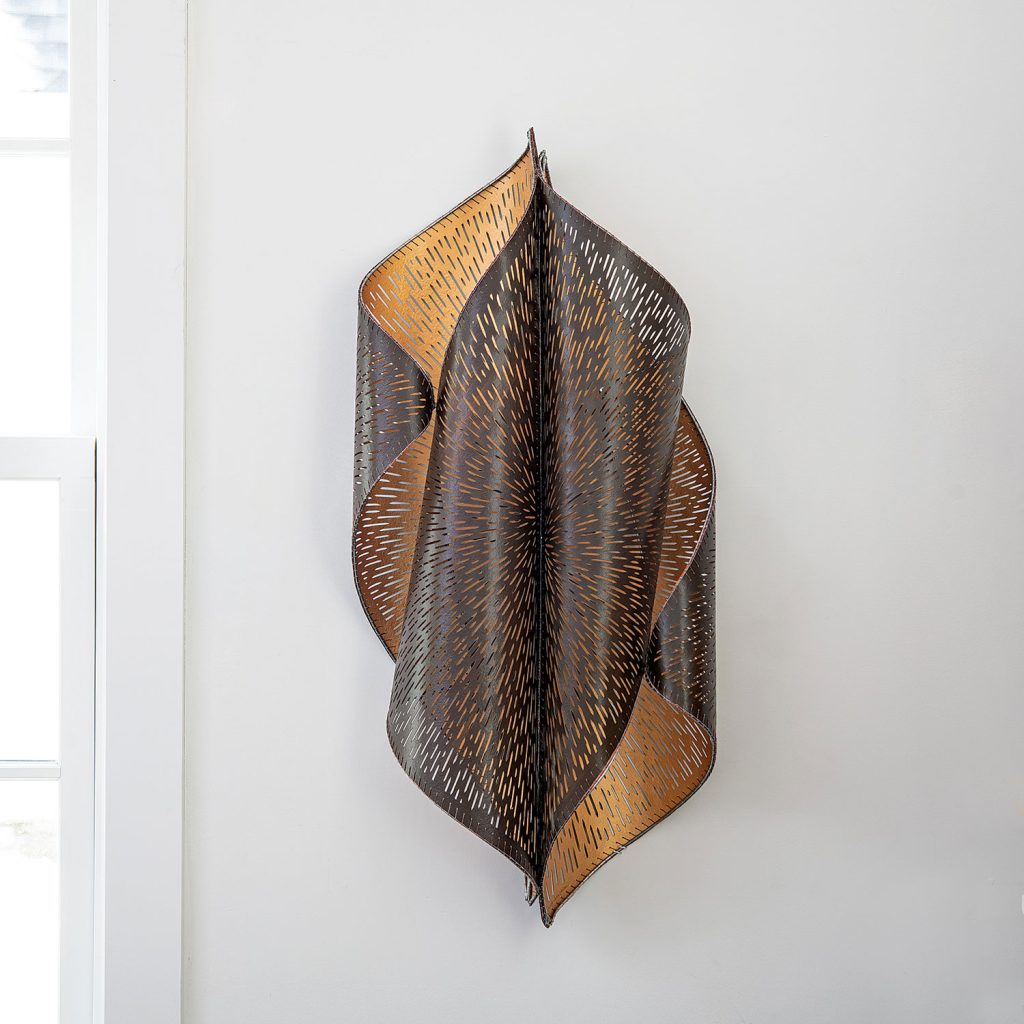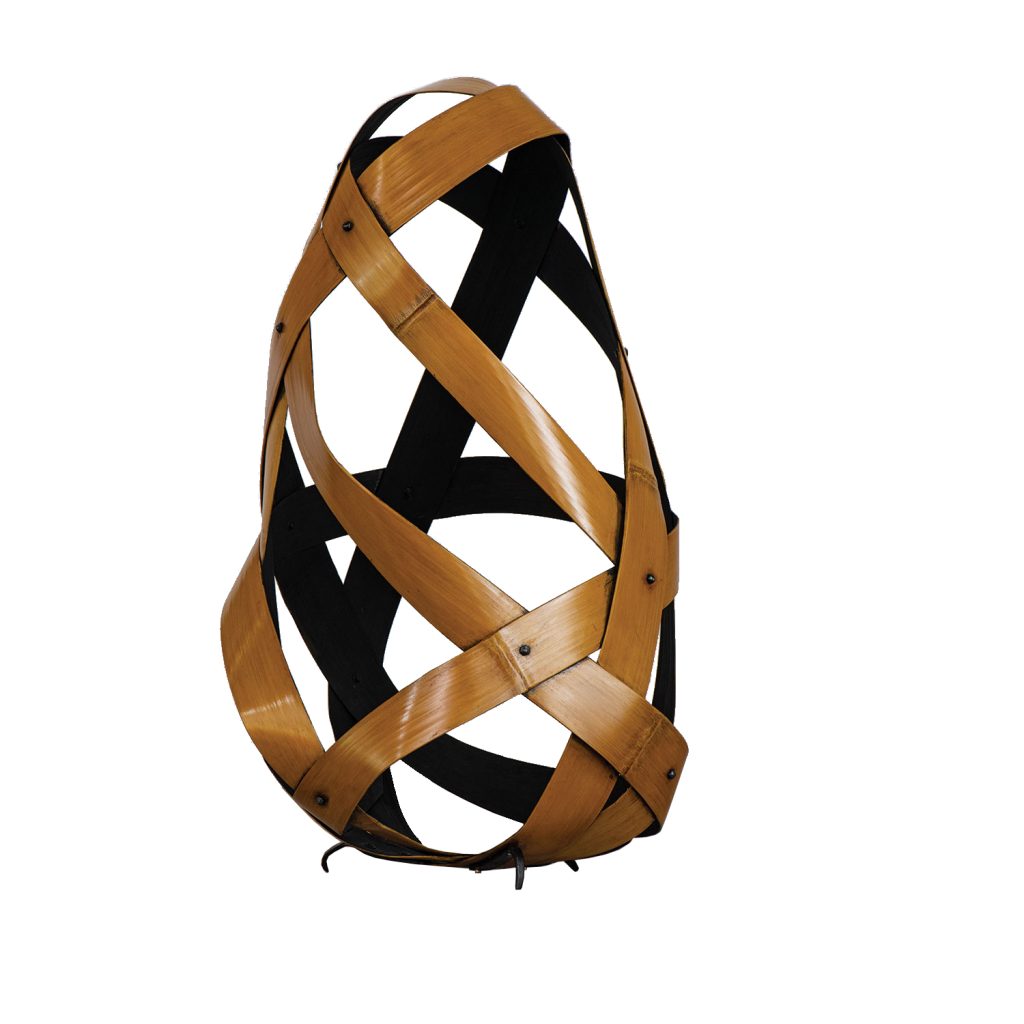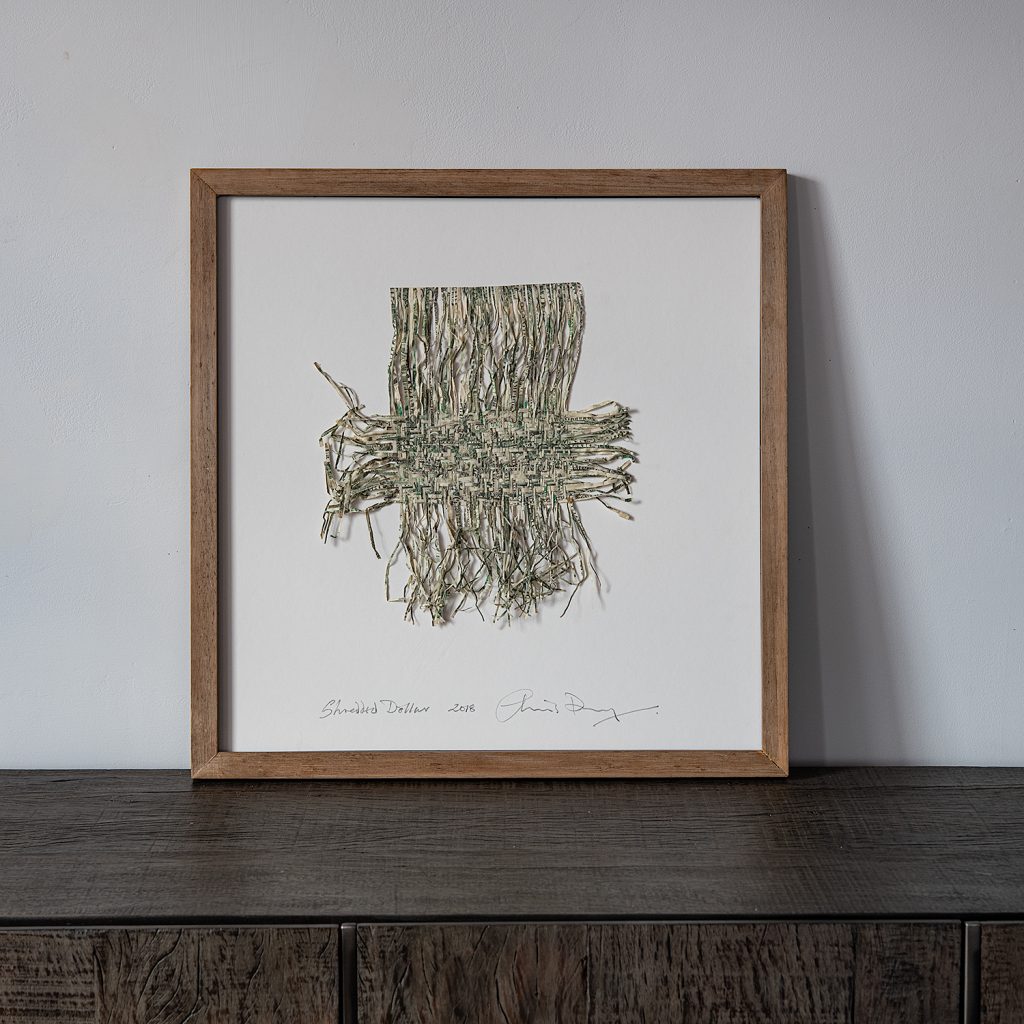Welcome to our April Art Assembled blog, where we are thrilled to showcase the incredible artists featured in our New This Week series. Last month, the artists highlighted in our New This Week series all happen to be included in our current exhibition, Acclaim! Work by Award-Winning International Artists.
As we near the end of the exhibition, we’ve been enjoying seeing and meeting everyone at Acclaim! and invite those who haven’t had the chance to visit yet to come experience the stunning works of James Bassler, Adela Akers, Ed Rossbach, Helena Hernmarck, Mary Giles, and so many more while it’s still open! You have until this Sunday, May 7 to come check it out in person.
In the following paragraphs, we will dive deeper into the art of James Bassler, Adela Akers, Ed Rossbach, Helena Hernmarck, and Mary Giles, highlighting some of their stunning pieces on display in our exhibition.

To kick off the month of April, we introduced you to the masterful textile artist James Bassler, whose piece “Unravelling” exemplifies his skill and creativity. Bassler’s unique style combines traditional weaving techniques with modern sensibilities, resulting in pieces that are both timeless and contemporary.
This particular piece features a map of the United States on PBS, illustrating the deep divide of the states and Bassler’s concern for the state of democracy. He wondered if our democracy is unraveling, leading him to name this piece “Unraveling.” He finished the piece on his 89th birthday.
Throughout his career, Bassler has received many accolades and honors for his art, including a Lifetime Achievement Award from the American Craft Council.
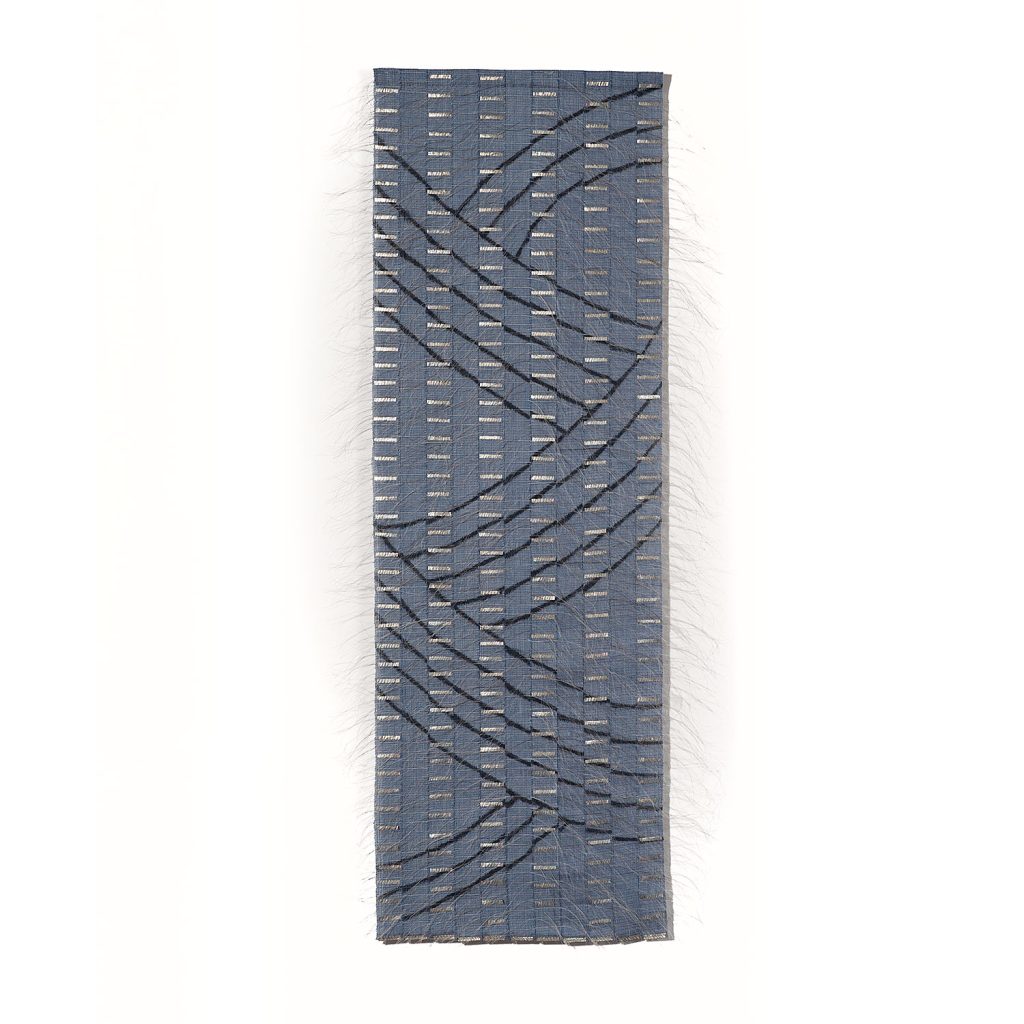
As the month continued, we introduced you to Adela Akers, a talented textile artist who uses mediums like metallic threads and horsehair to create a mesmerizing interplay of light and shadow, evoking the movement of waves in the ocean. “Silver Waves” is a captivating piece that will leave you in awe of Akers’ skill and imagination. Her art is a beautiful representation of the delicate balance between nature and human creativity.
Born in the Czech Republic, Akers grew up in Venezuela and later moved to the United States. Her art is a beautiful representation of the delicate balance between nature and human creativity, and her pieces are included in many prestigious private and public collections, including the Smithsonian Institution.
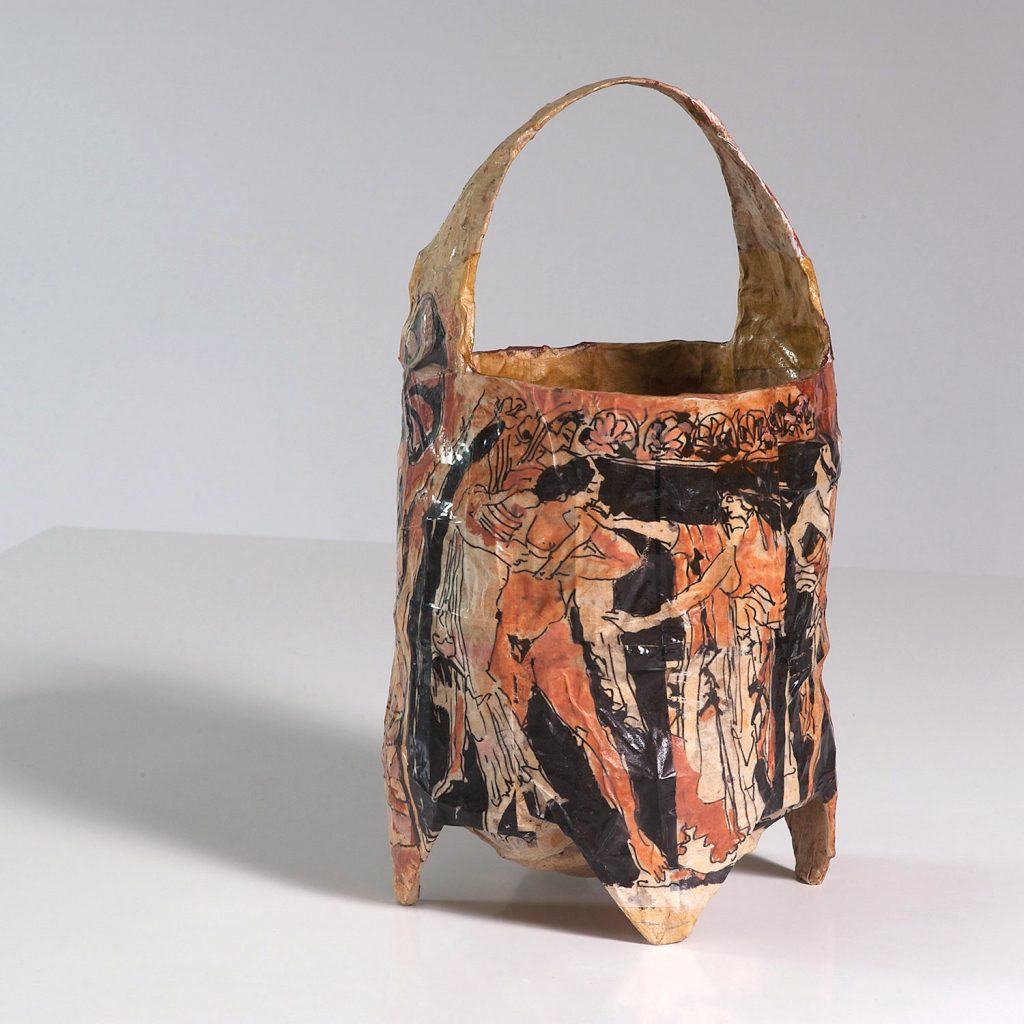
Ed Rossbach was a master weaver and sculptor who revolutionized the world of basketry with his innovative use of ancient techniques and unconventional materials like plastics and newspaper.
His incorporation of pop culture references into his art is a testament to his imaginative prowess. Rossbach’s art invites the viewer to see beauty in the unexpected, and his unique style continues to inspire artists today.
Throughout his long and prolific career, Rossbach received many awards and honors, including a Lifetime Achievement Award from the National Museum of Women in the Arts.
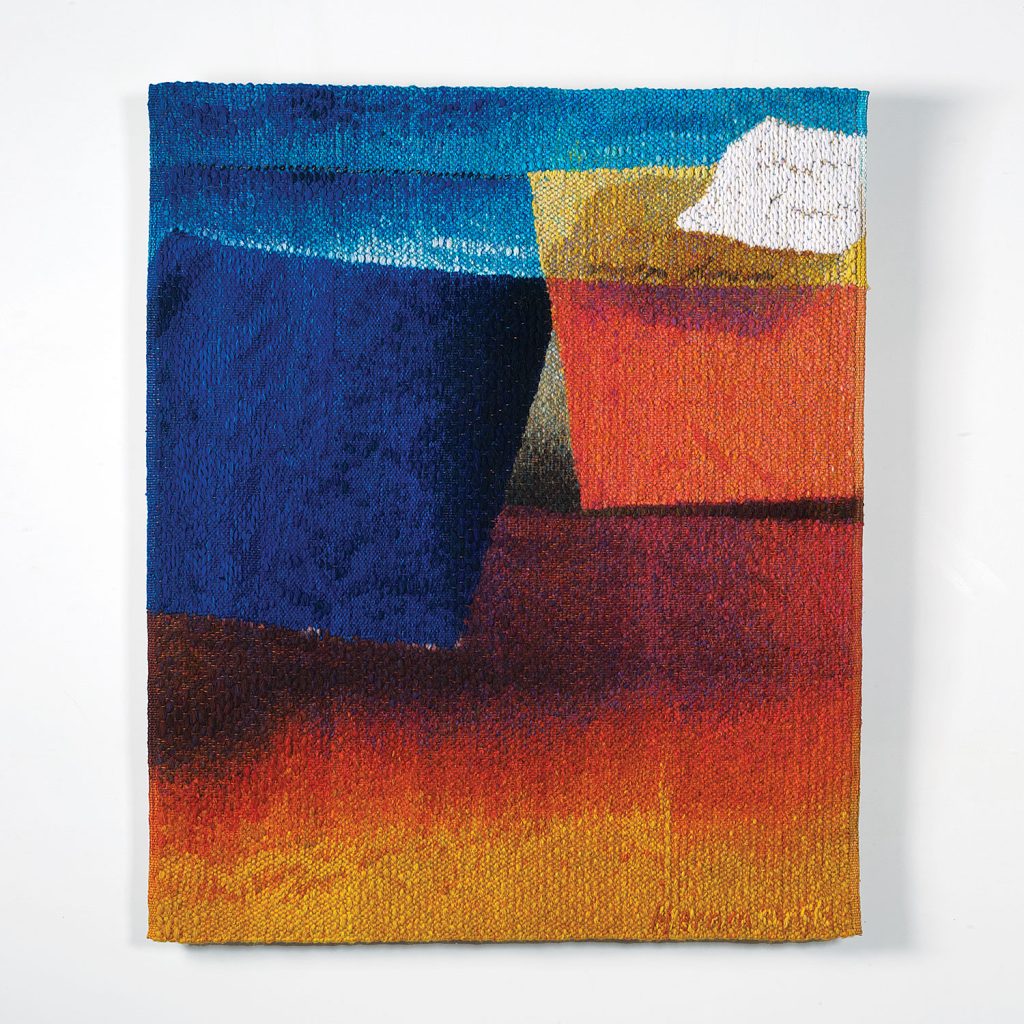
Up next, we turned our attention to the visionary Swedish-born artist and handweaver, Helena Hernmarck. Hernmarck has revolutionized tapestry as a medium for modern architectural spaces. Her tapestries are renowned for their incredible illusion of movement, captivating viewers and transcending the boundaries of two-dimensional art.
Born in Stockholm, Hernmarck studied at the Handarbetets Vänner textile school in Stockholm before moving to the United States. She has received numerous awards and honors throughout her career, including a Lifetime Achievement Award from the American Craft Council.
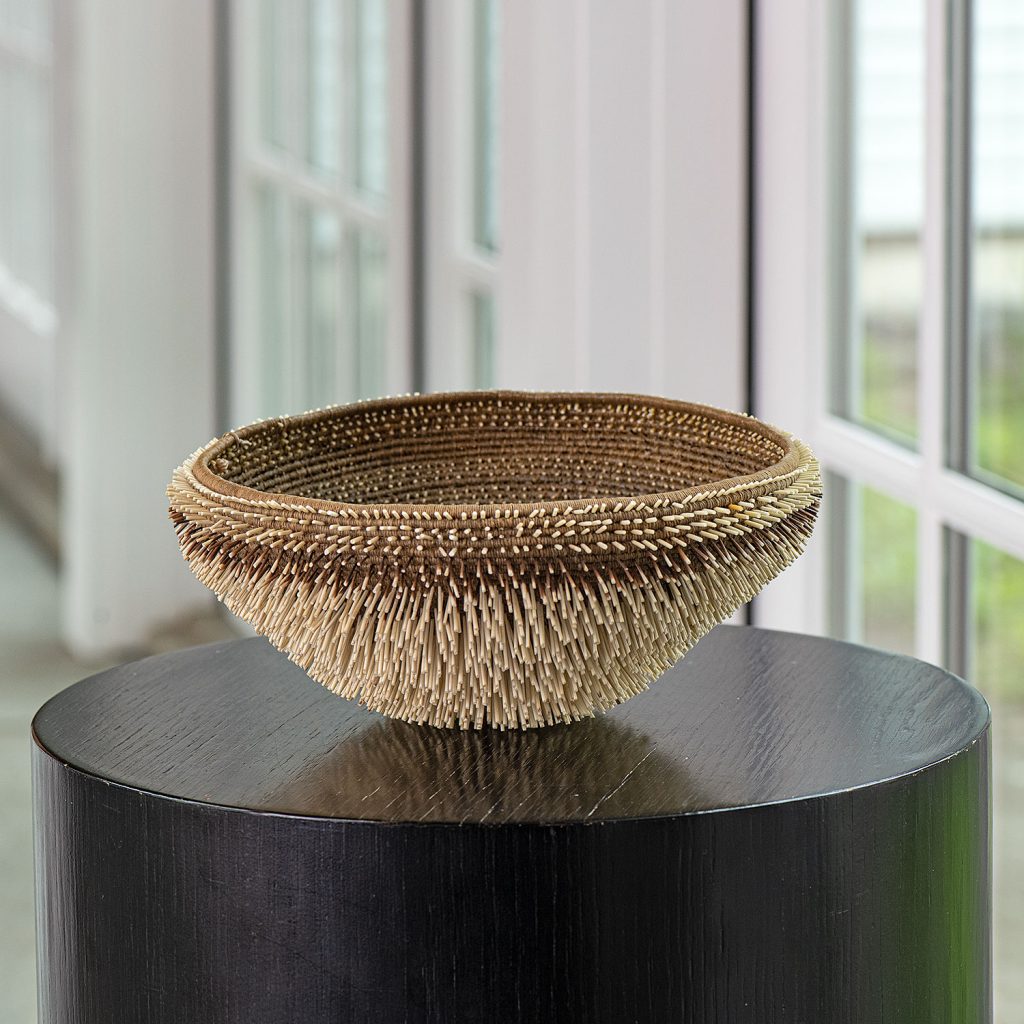
Last, but not least, we highlight the work of the late Mary Giles. Giles was a renowned artist who mastered the coiling technique associated with Native American basket traditions. Her work included striking wall pieces and freestanding sculptures that draw inspiration from the environment, human figures, and vessels.
Her signature style incorporated thin metal strips, some of which are shaped like human figures, layered over a surface or core. Her pieces are a beautiful representation of the connection between art and nature, and her work is included in many prestigious collections, including the Smithsonian American Art Museum.
There are only a couple of days left to experience the stunning works of the incredible artists in our Acclaim! exhibition in person. Don’t miss out on this amazing opportunity to engage with the art and immerse yourself in the world of these talented artists. For more information on Acclaim! or to register, click here. We hope to see you there!

